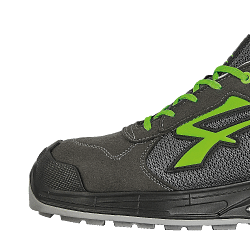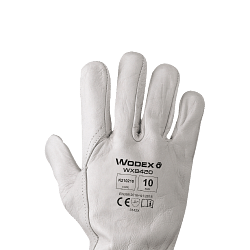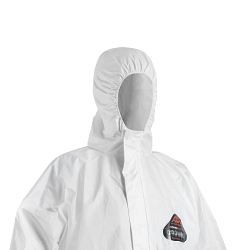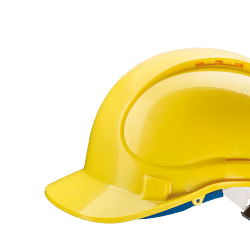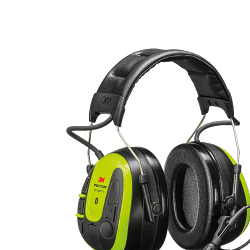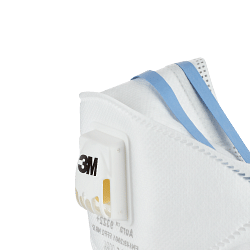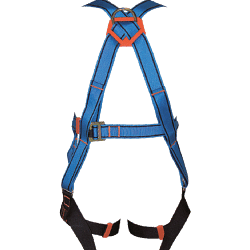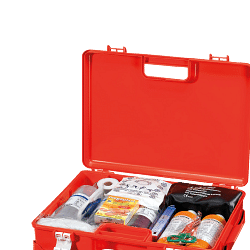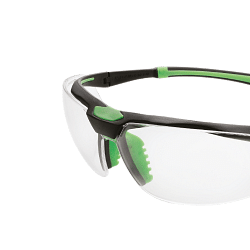Register and use the discount code NEWWELCOME to get 10% off on your first purchase. GET DISCOUNT.
Register and use the discount code NEWWELCOME to get 10% off on your first purchase. GET DISCOUNT.
Register and use the discount code NEWWELCOME to get 10% off on your first purchase. GET DISCOUNT.
Free shipping in 24h from 200€
Catalogues
Customer service
How can we help you?
- Faq
- Customer service
02.927371
- Supporting big orders
02.38298620
-
info@linkindustrialtools.it
- Request assistance with form
Or contact us with the chat in the lower right corner
< Safety equipment
- Home
- Safety equipment
- Work helmets
Work helmets
Hard hats are essential personal protective equipment to ensure the safety of operators in machine shops and many other industrial environments. These tools not only protect the head from accidental impacts, but also provide a barrier against electrical, chemical and thermal hazards. In a work environment where safety is a top priority, understanding the importance and proper use of hard hats is crucial.
The importance of hard hats in machine shops
Machine shops are dynamic and complex environments, characterised by a variety of machinery and equipment that can pose potential hazards. Work helmets are designed to absorb and distribute the energy of an impact, reducing the risk of serious injury. Their structure generally consists of a rigid outer shell and an internal suspension system that cushions shocks.
Technical characteristics of work helmets
Work helmets must comply with specific safety regulations, such as EN 397 in Europe, which sets minimum requirements for impact resistance, penetration, flammability and electrical resistance. Some advanced models offer additional features, such as integrated visors, hearing protection and ventilation systems to improve comfort during prolonged use.
Benefits of using hard hats
The adoption of appropriate work helmets has numerous advantages. Firstly, they significantly reduce the risk of head injuries, which can have devastating consequences for a worker's health and career. Furthermore, the use of helmets that comply with current regulations is often a legal requirement, non-compliance with which can result in penalties for the company. Finally, promoting a safety culture through the use of personal protective equipment can improve employee morale and productivity.
How to choose the right work helmet
Choosing the right work helmet depends on several factors, including the type of activity performed, the specific hazards of the work environment and the individual needs of the operator. It is important to consider compatibility with other protective equipment, such as goggles or masks, and the adjustability of the suspension system to ensure a safe and comfortable fit.
Maintenance and care of work helmets
To ensure maximum protective effectiveness, work helmets must be maintained regularly. This includes regular cleaning with non-aggressive detergents, visual inspection for damage or signs of wear, and timely replacement of damaged components. It is essential to follow the manufacturer's instructions regarding the service life of the helmet and how to store it.
Answers to frequently asked questions about work helmets
1. How often should I replace my work helmet?
The lifetime of a work helmet depends on the material and conditions of use, but it is generally recommended to replace it every 3-5 years, or immediately after a significant impact.
2. Can I customise my work helmet with stickers or paint?
It is not recommended to apply adhesives or paint that could compromise the integrity of the material. Some manufacturers offer safe customisation options.
3. Are hard hats mandatory in all machine shops?
The obligation to wear hard hats depends on local regulations and the assessment of risks specific to the work environment. However, it is always advisable to take preventive measures to ensure safety.
Conclusion
Hard hats are a crucial element in the safety strategy of machine shops. Their correct selection, use and maintenance can make the difference between a safe working environment and a risky one. Investing in training and making workers aware of the importance of personal protective equipment is a key step in promoting a safety culture and protecting a company's most valuable asset: its employees.
Read More Read LessThe importance of hard hats in machine shops
Machine shops are dynamic and complex environments, characterised by a variety of machinery and equipment that can pose potential hazards. Work helmets are designed to absorb and distribute the energy of an impact, reducing the risk of serious injury. Their structure generally consists of a rigid outer shell and an internal suspension system that cushions shocks.
Technical characteristics of work helmets
Work helmets must comply with specific safety regulations, such as EN 397 in Europe, which sets minimum requirements for impact resistance, penetration, flammability and electrical resistance. Some advanced models offer additional features, such as integrated visors, hearing protection and ventilation systems to improve comfort during prolonged use.
Benefits of using hard hats
The adoption of appropriate work helmets has numerous advantages. Firstly, they significantly reduce the risk of head injuries, which can have devastating consequences for a worker's health and career. Furthermore, the use of helmets that comply with current regulations is often a legal requirement, non-compliance with which can result in penalties for the company. Finally, promoting a safety culture through the use of personal protective equipment can improve employee morale and productivity.
How to choose the right work helmet
Choosing the right work helmet depends on several factors, including the type of activity performed, the specific hazards of the work environment and the individual needs of the operator. It is important to consider compatibility with other protective equipment, such as goggles or masks, and the adjustability of the suspension system to ensure a safe and comfortable fit.
Maintenance and care of work helmets
To ensure maximum protective effectiveness, work helmets must be maintained regularly. This includes regular cleaning with non-aggressive detergents, visual inspection for damage or signs of wear, and timely replacement of damaged components. It is essential to follow the manufacturer's instructions regarding the service life of the helmet and how to store it.
Answers to frequently asked questions about work helmets
1. How often should I replace my work helmet?
The lifetime of a work helmet depends on the material and conditions of use, but it is generally recommended to replace it every 3-5 years, or immediately after a significant impact.
2. Can I customise my work helmet with stickers or paint?
It is not recommended to apply adhesives or paint that could compromise the integrity of the material. Some manufacturers offer safe customisation options.
3. Are hard hats mandatory in all machine shops?
The obligation to wear hard hats depends on local regulations and the assessment of risks specific to the work environment. However, it is always advisable to take preventive measures to ensure safety.
Conclusion
Hard hats are a crucial element in the safety strategy of machine shops. Their correct selection, use and maintenance can make the difference between a safe working environment and a risky one. Investing in training and making workers aware of the importance of personal protective equipment is a key step in promoting a safety culture and protecting a company's most valuable asset: its employees.


